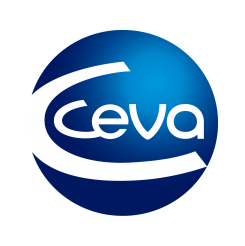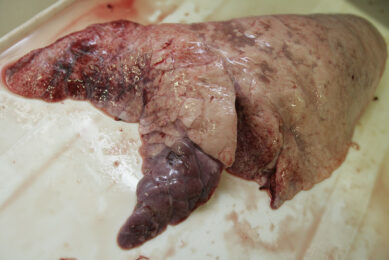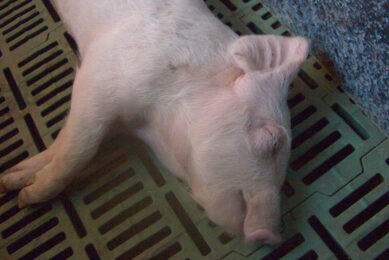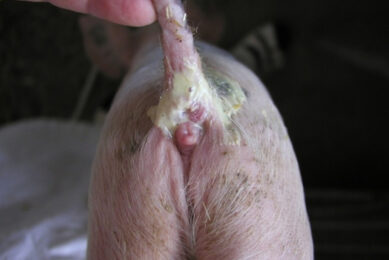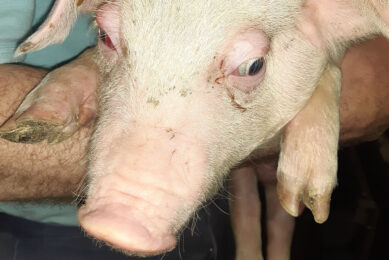Influenza and its presence in European pig herds
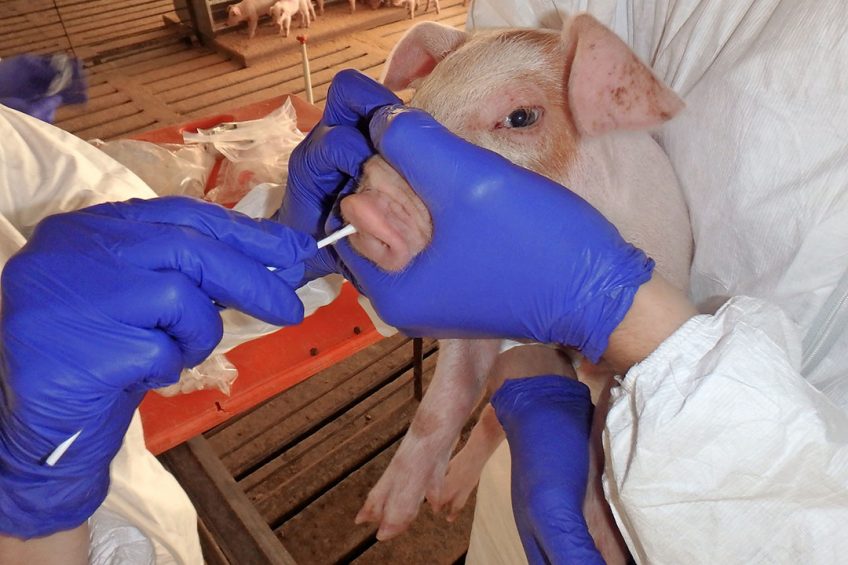
European domestic pig populations appear to be an emerging reservoir of potentially zoonotic influenza A viruses. A study was published recently to support this theory. What exactly does that discovery mean and how can it influence vaccination programmes?
Swine influenza virus (SIV) infections appear to be widespread in European domestic swine populations. In a recent study by German, British, Finnish and American scientists, published in the peer-reviewed journal Cell Host & Microbe, a high incidence of infection was evident in pigs with respiratory disease. The virus apparently acts as a component of a mixture of different co-pathogens. The study was designed as a passive surveillance driven by sample submissions from holdings affected by respiratory problems. Hence, the results were not meant to be representative.
Prevalence in the EU pig population
Up to 50% of holdings with respiratory problems housed pigs with SIV infections, and up to 30% of individual pigs showing respiratory clinical signs tested positive for the virus.
In total, 4 main lineages of SIV were identified (Figure 1):
- H1avN1av,
- H1huN2,
- H3N2,
- H1pdmN1pdm
Their prevalence differed widely between regions and countries in Europe. In addition, 8 further subtype reassortants of these strains were identified at different, usually lower, frequency. Often those reassortants have a local origin (e.g. H1pdmN2 in northwestern Germany; H1avN2 in Denmark, etc.) and a few show spreading tendencies. There was a dynamic fluctuation over time of the composition of circulating SIV in a country.
The frequency of these strains varied between different countries. Often, they shared 5–15% of the total SIV load in a country. H1pdm-like strains were detected at higher frequency in the UK and Ireland compared to on the continent.
In the research, up to 4 major SIV lineages showed up in farms. Some farms had a single prevailing strain of SIV, but there were also holdings from which different lineages were isolated consecutively over time. In few farms, the simultaneous presence of 2 or 3 of the major lineages was evident.
Figure 1 – Proportional distribution of haemagglutinin (HA) over the years. All four main HA/NA lineages of swine influenza virus were detected.

In total 31 different genotypes
The study described 31 distinct genotypes. The majority originated from reassortment events between older SIV lineages and the human pandemic H1N1 virus introduced to the swine population in 2009. Similar increasing reassortment activity has also been observed in the Americas and in Asia. In North America since 2011, several series of regional outbreaks of human infections with SIV have been due to SIV reassortants which carried at least the matrix genome segment (M) of the human H1pdm virus.
The reassortants detected in Europe, however, were different from those that have caused the outbreaks in the US. Nevertheless, the incursion of the human H1pdm virus into the swine population further increases viral variability and may create increased zoonotic potential in SIV reassortants.
The risk of strains as reservoirs
Antigenic diversification of human influenza A virus (IAV) strains after transmission to and spread in swine populations is one of the risks of reverse-zoonotic IAV spillover events. Antigenic cartography as used in the study is a versatile tool to assess the antigenic relationship of different IAV strains. Evidence was found indeed for extended circulation in domestic pigs of H1pdm lineages that are antigenically significantly distinct from current human strains.
It is difficult to extrapolate such results to an actual risk of zoonotic transmission. That risk was assessed by testing adult human sera against the variant SIV lineages, which still found a reasonable degree of cross-reactivity. That is likely due to the broad immunological memory generated in adult humans following various episodes of influenza virus infections and/or vaccinations.
Similar cross-reactivity could also be noted against other SIV lineages such as the H1av subtype. However, the study has not been able to include sera of children who have limited influenza exposure. In fact, a substantial proportion of the few sporadic human SIV infections described in Europe have been reported in children and in immunocompromised adults.
Avoiding new reassortants
Pigs are known as a mixing vessel of IAV of porcine, human and even avian origin. Historically, all human pandemic viruses (with the sole exception of the 1957 H2N2 IAV) have been transmitted by humans to pigs in a “reverse zoonotic” fashion. These strains were and are maintained in pig populations over decades. That enlarges the reservoir of genetic building blocks for future zoonotic IAV. The true rate of mutual IAV transmission at the human–porcine interface is not known and is difficult to assess.
On the basis of the few and sporadic cases of SIV causing disease in individual human beings in Europe, SIVs are not easily transmitted to humans, though there may be asymptomatic infections that have been neglected in the past. Reducing the load of IAV present in swine populations and in humans during the influenza season certainly would decrease the risk of mutual exposure and hence transmission of viruses. Inhibiting infections and/or reducing the load of virus excretion after infection are the main goals of vaccination. Therefore, vaccination of swine against SIV and of staff interacting with swine against human seasonal influenza is highly recommended, including from a one-health perspective.
Vaccination against influenza
The difficulty with influenza vaccines is that the variation in the antigenic make-up is a notorious feature of all IAV strains. Attempts to find a universal vaccine, a “one size fits all” solution, has failed so far even for human seasonal influenza. Therefore it is a common and useful strategy in influenza vaccine design to combine the major circulating strains of a season or of a region into multivalent vaccines.
 Shedding new light on Salmonella in pig farms
Shedding new light on Salmonella in pig farms
Salmonella is an increasing problem in European pig farms and this is worrying because of the danger of it spreading to humans. Work in Germany has shown that it is possible to eliminate the disease from commercial herds.
The role of haemagglutinin
Haemagglutinin (H) is the major viral determinant inducing protective immunity through the induction of antibodies neutralising viral infectivity. Those antibodies are believed to play an important role in inhibiting infection of a vaccinated individual, especially if such antibodies are present on the surface of the respiratory tract. Current concepts of human seasonal influenza vaccines therefore focus on as high as possible homology between the H proteins of the vaccine and the circulating strains. On that basis a vaccine based on subtype H1avN1 is expected to also protect against H1avN2, provided the H1 proteins of the 2 viruses are (almost) identical.
In contrast, an H1N1 vaccine may be useless against circulating H1N1 viruses if the H proteins differ significantly in the immunogenic regions important for the binding of neutralising antibodies. Recent studies on human influenza viruses now suggest that immunity against the neuraminidase component also plays a substantial accessory role in conveying protection.
The majority of human influenza vaccines are entirely composed of haemagglutinin and neuraminidase proteins, the major viral determinants that induce protective immunity. Other viral proteins also induce immunity that may be helpful in overcoming infection. The veterinary vaccines licensed in Europe do contain full virus preparations, including all structural viral proteins.
Any strategy that aids in enhancing and broadening vaccine efficacy and induces protection against a wide range of IAV variants is highly welcome. Prime-boost concepts may act in this direction. Another option, which has been implemented in the licensed SIV vaccines in Europe, is the use of adjuvants in the vaccine composition which specifically stimulate the immune system and may potentiate vaccine efficacy.
New influenza G4 variant in China
To close, a few words on the new G4 variant that Chinese researchers have reported on. The epidemiology of SIV in Asia has been even more complicated compared to Europe because not only Eurasian but also North American SIV strains and reassortants thereof are detected. The recently reported G4 genotype belongs to the H1av subtype and seems to have gained some primacy among SIVs in China. That strain was reported to have zoonotic properties that make it a pre-pandemic candidate. However, human infections, confirmed by virus detection, were detected only sporadically and there was no evidence for sustained human-to-human transmission chains. As such, this situation does not differ qualitatively from the European status reported in the study on European herds.
Author: Professor Dr Timm Harder, PhD
The author of the article was one of the main authors of the scientific study. He is attached to the Institute of Diagnostic Virology (IVD), Federal Research Institute for Animal Health, Germany, and is extraordinary professor at the Institute of Infection Medicine, Christian-Albrechts-University, Kiel, Germany.
Authors of Ceva Animal Health were involved in the scientific publication.


